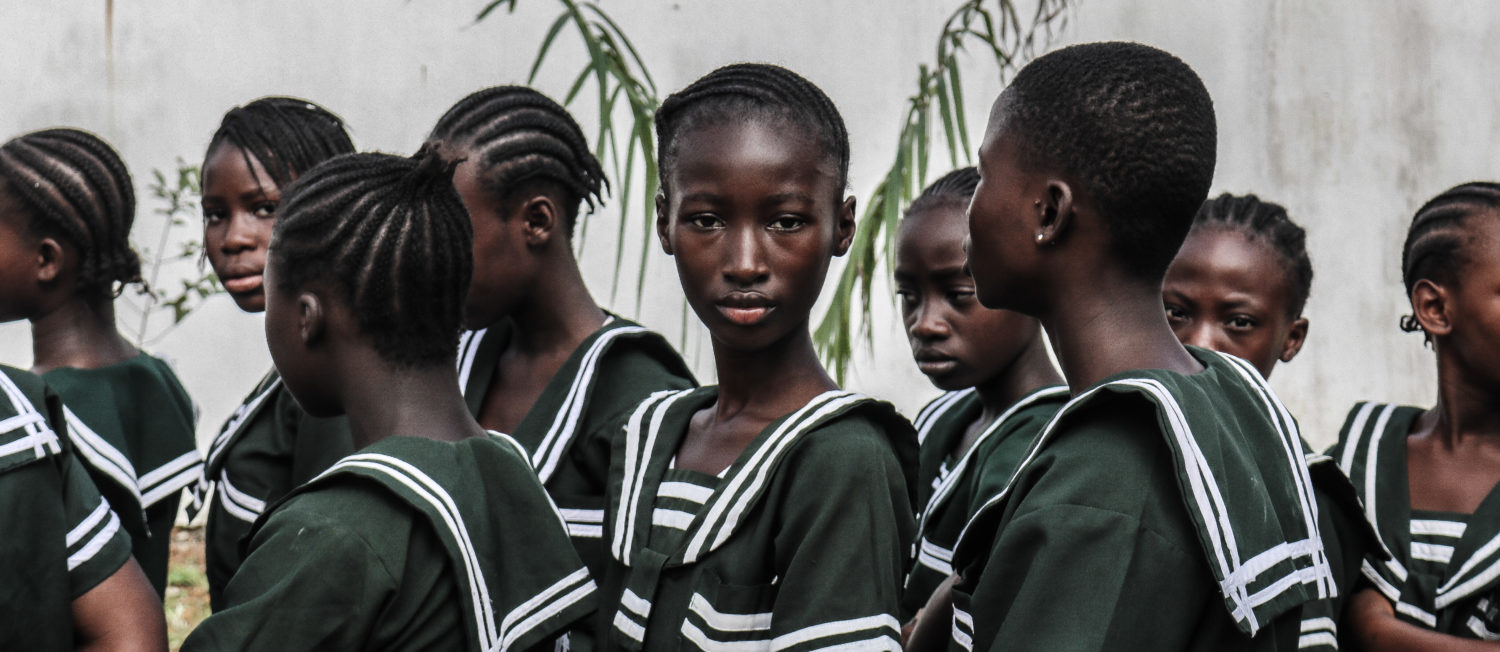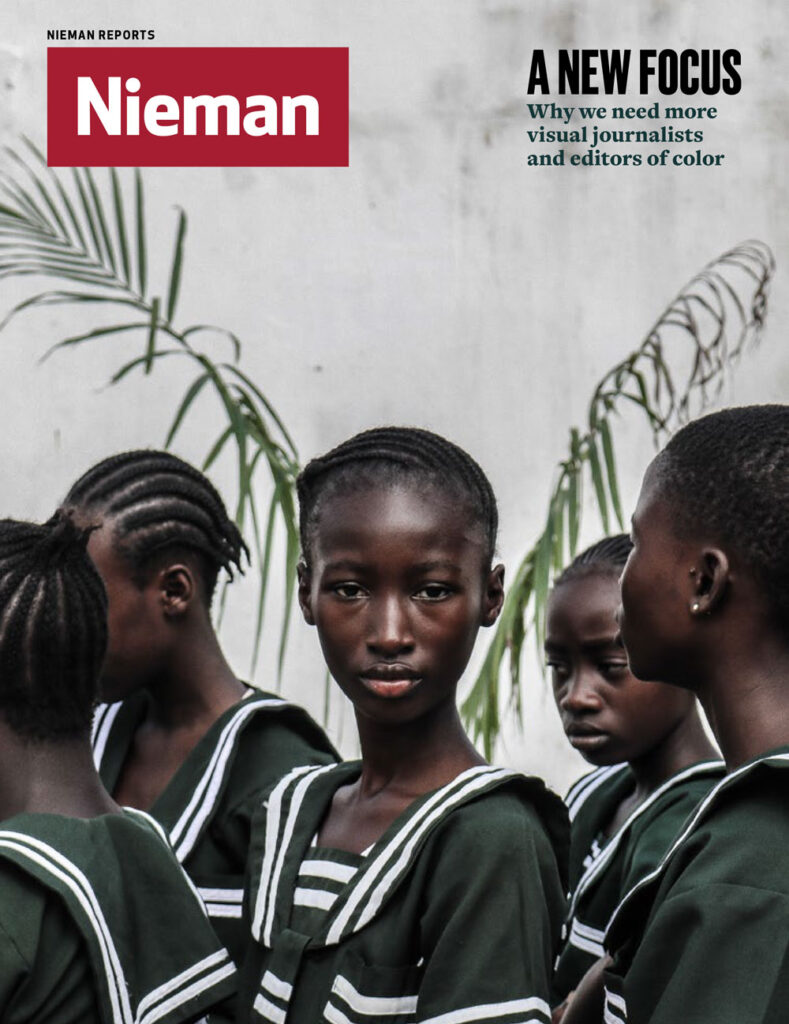A tall man—handgun tucked in his waistband and face wrapped in a shirt leaving only his eyes visible—stares at the journalists staring at him. He is looting a Ferguson, Missouri gas station during protests of Michael Brown’s shooting by police.
It is Monday, August 25, 2014, publication day for the international newsmagazine where I am a freelance photo editor, and my colleagues and I are huddled together around a computer monitor, surveying sets of images from Ferguson, including the one described above. It’s time to select four photos—each deemed representative of the week’s most important news stories. We’ve reached consensus that Ferguson must be among those stories. However, which shot of the escalating unrest will be selected is still under discussion.
Next up for consideration is a shot of several Ferguson protesters in the rain, their mouths open mid-yell and hands stretched high above their heads in the “hands up, don’t shoot” position. Despite the emotional pull of the second image, several editors express a preference for the first photo because of the subject’s intensely direct gaze. The editor who selected that particular frame from the photo wires agrees, insisting the shot of the man in the gas station deserves a place in the featured four.
Haltingly and with great trepidation, I disagree. All sets of quizzical eyes turn to me—the lone woman in the group and the only black person on the small news staff. I make a case for the second image, asking, “Do we really want to make a statement to the world that the most important thing happening in Ferguson right now is looting? Are we comfortable minimizing this developing protest about the treatment of blacks in America to a story about a small contingency of violent looters?”
A lack of equity and inclusivity among those who work behind the documentary camera is an often overlooked problem
The first image of the looter exemplifies the kind of stereotypical depictions of black Americans as criminal and suspect still so prevalent in news media. Despite my frustration at this personal reminder of how insidious implicit bias can be, even among the very well-intentioned, I choose not to verbalize that particular point. Thankfully, with almost immediate unanimous agreement, the editors selected the second image of rain-soaked protesters and moved onto the next set of news images—photographs documenting the Ebola crisis in West Africa.
Scenes like this one—in which a cadre of mostly white male photo editors discuss which images will make that day’s web or print publication—are not uncommon. Throughout my 14 years working in seven different newsrooms, I have witnessed a dearth of diverse perspectives, both among those photographing news images and those selecting images for publication.
My personal experiences are not unique. In 2015 and 2016, World Press Photo Foundation (WPP) released annual state of news photography reports that highlighted an often overlooked problem: a lack of equity and inclusivity among those who work behind the documentary camera. Based on responses from about 2,000 news photographers worldwide, the reports included the statistic that only 15 percent of them were female. Though a troublingly unequal division of nationalities among news photographers was mentioned in the reports, no statistics on the photographers’ racial identities were included. That will change this year because the WPP’s annual survey (an informational snapshot of photographers entering the yearly contest) added a question about race and ethnicity. The results haven’t yet been released. For too long, the way we as visual journalists represent and reproduce race has received no extensive analysis and critique within the field of journalism.
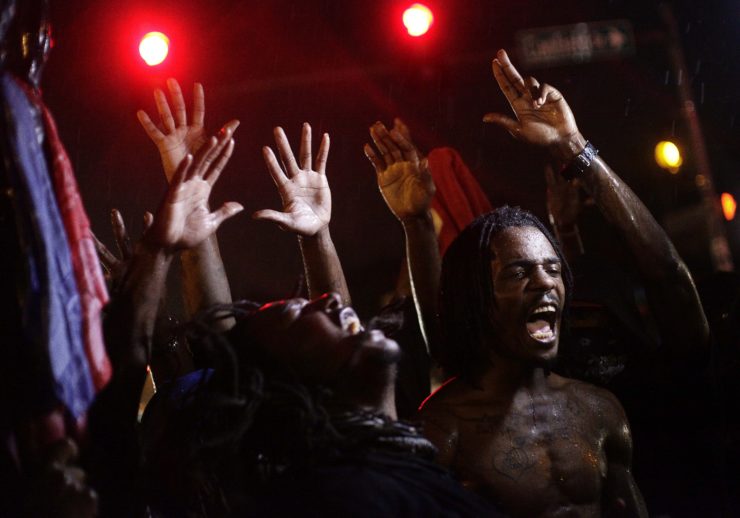
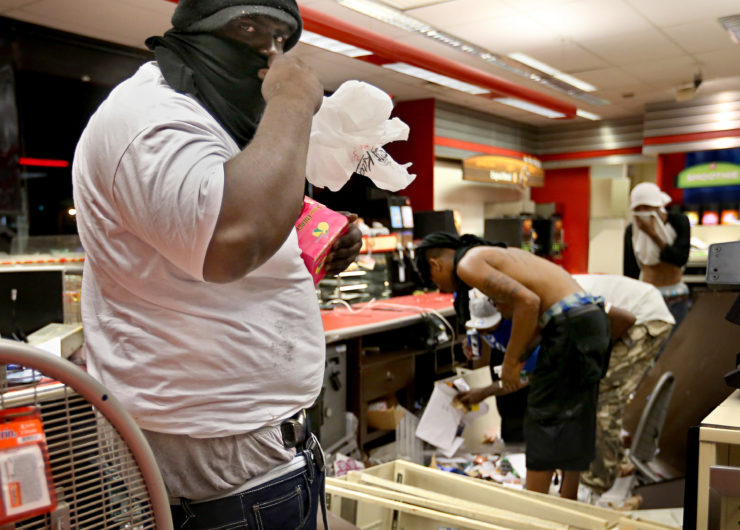
While photographs that grace the pages and websites of American news media are filled with images of black and brown people whose struggles for racial equality and civil rights are constant media fodder, those behind the images rarely share similar identities and experiences. Brent Lewis, senior photo editor of ESPN’s The Undefeated, says recognizing there is a problem is the first step. “Being aware that when trying to cover stories in the vein of black life, you probably should have someone who actually lived it,” says Lewis. “You need to have insight from someone who understands that realm.” When both photographers in the field and photo editors in the newsroom are primarily white and male, news images will reflect that singular perspective.
Though the statistics appear grim, there are glimmers of change. Initiatives such as the African Photojournalism Database, Majority World, Native Agency, and Everyday Africa, paired with advocacy by professionals such as World Press Photo’s David Campbell; Nicole Crowder, former photo editor for The Washington Post; and The Undefeated’s Lewis, are effecting change. In addition to holding its legendary Joop Swart Masterclass in Amsterdam, World Press Photo recently began offering additional photojournalism master classes in countries such as Mexico and Ghana. Throughout her time as an editor at the Post, Crowder recognized the journalistic value of giving chances to unknown photojournalists of color. Under her watch, a knowledge and appreciation of the community a photojournalist was assigned to photograph was just as—if not more—important than being a well-known name.
One of the major stumbling blocks to having a breadth of photojournalists with diverse backgrounds is a difficult-to-eliminate class disparity. Those who have access to elite schools, financial security, and professional connections in newsrooms are more likely to succeed. Specifically in photojournalism, those who have the economic capital to purchase camera equipment, keep up with rapidly changing technology, and self-fund photo projects abroad are more likely to win recognition and assignments.
The connection between race and class is as prevalent in photojournalistic hiring as elsewhere in American society, a connection often underscored in our news coverage but overlooked in our newsrooms. Like so many of the social institutions they report on, the news media often reproduce the inequality they try to expose elsewhere. Shaminder Dulai, Newsweek’s photography director, says, “As a person in a position to hire, diversity helps me identify and avoid blindspots. For a profession many enter to give ‘voice to the voiceless’ and ‘shine a light,’ we have to start by giving people a seat at the table to join the effort to newsgather and report.”
The overwhelming whiteness of newsrooms was criticized recently in The New York Times and on CNN’s website. Times public editor Liz Spayd and CNN race and inequality reporter Tanzina Vega called out what they deemed insubstantial efforts to diversify newsroom staffs. Absent from many of these write-ups, however, is a discussion of how lack of access to journalism education, newsroom jobs, and the networks necessary to succeed continue to impede equity in our newsrooms.
If we, as visual journalists, want to present difficult truths, we must address our industry’s own difficult truths. There are a growing number of individuals and organizations taking up this task. Their efforts toward that end are excellent examples of how turning the lens on our own practices can spur progress.
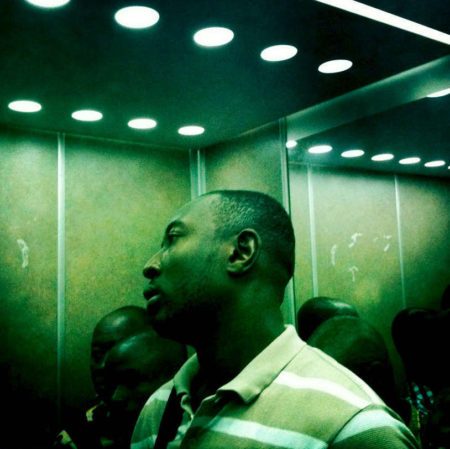
One of these is Everyday Africa (EA). As one of the first major interventions into photojournalistic inequity, EA has been doing work since 2010 that’s proven vitally important in addressing both the nationality and racial disparities among photojournalists. Additionally, its collaborations with World Press Photo and global assignment platform Blink have produced opportunities, such as the African Photojournalism Database, for showcasing oft-overlooked talent. Dulai calls such efforts “excellent discovery engines for editors to be exposed to new talents.”
American photojournalist Peter DiCampo and his writer colleague Austin Merrill have been working toward this end for several years. While on assignment together in 2012 for the Pulitzer Center on Crisis Reporting, DiCampo observed a man in an elevator surrounded by mirrored reflections of multiplied light and was struck by the scene’s symmetry. According to him, the moment spoke to the beautiful simplicity of everyday life in the Ivory Coast city of Abidjan and he opted to snap the shot with his smartphone, forgoing the professional cameras slung across his chest. DiCampo says it later struck him this photo was at odds with the stereotypical images of Africa, unfettered as it was by ideas of poverty, war, and illness.
“We’re reporting this conflict story but we used our phones to record daily life,” says Merrill. It was that “sort of negative space around this story we were there to report,” as he describes it, that spurred a new approach to storytelling for the two.
After snapping that first shot, he and Merrill began taking similar cellphone photos during downtime from their assignments across the African continent. DiCampo and Merrill wanted to render Africa in shades of gray that the broad strokes of conflict and disaster photography so often miss. DiCampo identifies what spurred him to start the project as an issue “of the world and its various cultures and subcultures all being seen by a similar singular lens for a long time.”
If we, as visual journalists, want to present difficult truths, we must address our industry’s own difficult truths
Those first images from the duo sought to represent African nations and citizens as both complex and nuanced entities whose lives were rarely depicted in their entirety by traditional documentary photography. Their Instagram account, titled Everyday Africa, grew in popularity, spurring lengthy conversations around the realities of daily life in Africa. “There’s a sort of fascinating debate on how outsiders see a place versus how people who live there see themselves,” says DiCampo about the commentary surrounding the Everyday Africa Instagram images. “We’re still sort of on this contextualizing, broadening, transcending stereotypes kind of mission.”
By using the democratic space of social media, they could offer alternate modes of understanding places and people who have been historically represented through a singular war-torn narrative, such as Kevin Carter’s Pulitzer Prize-winning image of a starving Sudanese toddler stalked by a vulture.
When Everyday Africa took over The New Yorker Instagram feed for a week in February of 2013, an image of two African teens sharing an iPhone headset received the comment: “Look at the darkies.” Merrill points to this kind of sentiment as the product of social media’s anonymity, which allows commenters to say things they really feel. However, he sees it as an opportunity, saying it “allows us to get deeper into the things that constitute those ideas we have about each other. Sometimes it’s blissfully ignorant, extremely racist, paternalistic, or funny.”
Ultimately, what matters most is that The New Yorker’s 1.4 million Instagram followers were exposed to images offering alternate viewpoints to the frequently negative depictions of African nations. Images such as Nana Kofi Acquah’s shot of young girls taking selfies on a beach in Ghana, infused with youth’s uniquely cavalier attitude as they offered duck-faced pouts to the smartphone camera; Girma Berta’s brilliantly colorful shot of a man carefully stepping onto a city bus in Ethiopia; Malin Fezehai’s photo of a stunning young woman backlit by windows open to Addis Ababa’s rainy morning. These are the moments that undermine stereotypes.
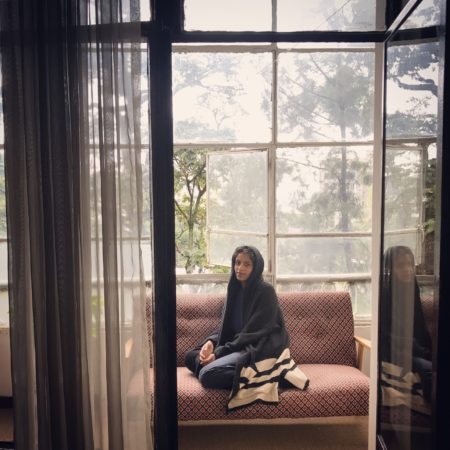
Merrill sums up the influence of EA, saying, “If the only thing appearing in the [New York] Times for 15 weeks is Ebola, you can go to Everyday Africa and see a different story, told through the understandings of people on the ground and in the spaces they’re showing.”
When David Campbell, director of communications and engagement for World Press Photo, saw the compiled survey data that would become the first State of News Photography Report, he says he knew there was a problem that needed immediate addressing. Only 2 percent of the photographers who entered the 2015 WPP contest were from the continent of Africa. Only 15 percent of all entrants were women. Though the organization had already been making strides to improve diversity among photojournalists, the discussion then began about making a pivotal commitment in the WPP. Campbell says the organization’s members asked themselves, “Can we get jurors from these countries? Can we make sure that it’s 50/50 male/female?”
These conversations led World Press Photo to produce regional versions of the prestigious Joop Swart Masterclass, a long-running workshop taught by respected photojournalists to emerging professionals in the field, typically held yearly in Amsterdam at WPP headquarters. By extending the reach of the Joop Swart to Mexico City and Nairobi among other cities, photographers local to those regions have direct access to the knowledge and network the master class provides.
In 2015, Campbell and DiCampo had the idea to create a list of African photojournalists that could serve as a database for photo editors the world over. WPP then partnered with Everyday Africa to create the African Photojournalism Database (APJD), now representing hundreds of photographers across the continent. Yagazie Emezi, a Nigerian Everyday Africa contributor and member of the APJD, sees this work as an important step. “For grossly too long, and even until this day, people still have a warped view of Africa,” Emezi says. “Through platforms such as APJD, a lot more wholesome insight can be given.”
We must commit to challenging all prevailing and easy narratives
Emezi’s photographs are beautiful illustrations of what that insight can be. One image depicts African schoolgirls in a line, green and white uniforms highlighting gorgeous brown skin that glows with the vitality of youth. Intelligent eyes look out from the frame, challenging the photographer and, by extension, the viewer to diminish this young woman to any injurious cliché.
Both EA and APJD maintain pages marketing work from the collectives’ photographers on Blink, a platform that connects visual content producers and photo editors looking to hire them. Blink co-founder Julien Jourdes says his organization is emphasizing photography initiatives that champion diversity. “We love Everyday Africa because they’re producing everyday news, they’re not exoticizing the people that they photograph,” says Jourdes.
Through opportunities like representation on Blink, APJD photographers are getting exposure to assignments and well-deserved recognition previously difficult to achieve. Miora Rajaonary, an APJD photographer and writer, had her images of South Africa highlighted in a recent Blink newsletter to potential assigning editors. “In Africa, we still have a lot to explore so photographers, especially local photographers that have a decolonized vision of their environment … their vision already is very fresh compared to what is currently shown in the media,” says Rajaonary. Though there are no statistics available on how many photojournalists from APJD and EA are getting assignments via inclusion on Blink, the platform itself is indicative of a dedication to diversity spreading to various corners of the industry.
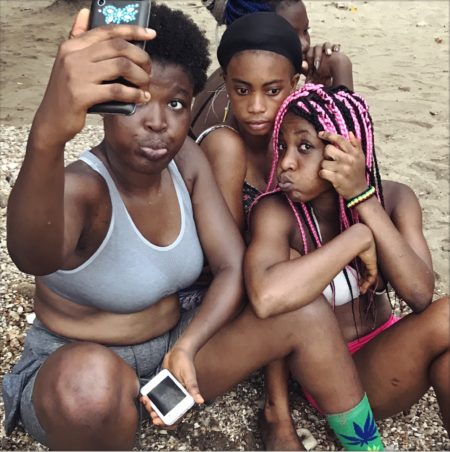
While World Press Photo, Blink, and Everyday Africa’s joint effort to create and market the APJD is a vital intervention in the monopoly of Western/white photojournalistic viewpoints, the integration of diverse visions among American photojournalism appears stagnant. The problems of misrepresentation and one-sided depictions of Africa’s nations and people has long been the low-hanging fruit of critiquing photojournalism, yet the related and not at all dissimilar issue of representing African-Americans has mostly escaped the same level of attention. Nowhere is this more evident than in recent news images of protesters, from the Black Lives Matter movement against police shootings of unarmed black Americans to the Sioux “Water Protectors” blocking construction of the Dakota Access Pipeline.
Media critics have often decried the overemphasis on violent black protesters— images that tend to play handily into the ever-present stereotype of blackness that finds its origins in post-slavery propaganda. Despite the fact that a huge cross-section of races, genders, and ages are present at Black Lives Matter protests, the most common photographs in news media capture black and brown bodies in moments of violence depicted or insinuated.
Lewis Diuguid, formerly of The Kansas City Star and a longtime advocate who has pushed for diversity at the Star and across the industry, identifies this problem as borne of the lack of diverse viewpoints in the newsroom. “When newspapers and other organizations lack people of color in their ranks, what that does is reduce the likelihood that stories of people of color will ever be told. If you’re from a white, middle-class background, then your vision is limited to white, middle-class people.” Rare is the published image that highlights peaceful protesting en masse and black communities working harmoniously. Yet it is precisely these photographs—evincing empathy rather than paternalistic sympathy—that capture the collective imagination.
New Orleans-based photojournalist Jonathan Bachman’s viral image of Ieshia Evans facing off with Baton Rouge police joined a long tradition of the individual photographed at the decisive moment of their solitary stance against authority. Such moments allow black Americans to be humanized rather than demonized, and a cursory search of newswire photos available for selection from these events indicate moments of solidarity and community are just as readily available as depictions of rage and violence.
Freelance photo editor Crowder, formerly of The Washington Post, says she often had to advocate for including the diverse perspectives of women and people of color in her news organization’s coverage. She recounted such an experience during the Freddie Gray unrest in Baltimore when she wanted to publish the work of a mostly unknown photographer who had been shooting the streets of Baltimore long before protests of the police began there. “I suggested that instead of showing the work of one of our staff photographers—who was white—that we show this young black photographer who was in Baltimore … photographing his city with so much grit and beauty and humanity,” Crowder recalled. Though she at first received pushback, the paper eventually ran the newcomer’s photographs. “It’s imperative for photo editors to look beyond their own familiar roster,” she says.
Though both Crowder and I had success in swaying our newsroom’s coverage toward more inclusive and less biased visual representations of people of color, the unfortunate truth is that there are few women and even fewer people of color—never mind women of color—in photo editor roles. A 2016 American Society of News Editors survey reported that only 13 percent of newsroom leaders were minorities. Among that already small group, black and Latina women represented 2.2 percent and 1.45 percent of news leadership, respectively. Consider that in contrast with the U.S. Census Bureau’s latest statistics on America’s racial makeup, which puts black and Latino/a citizens at 31 percent of the population.
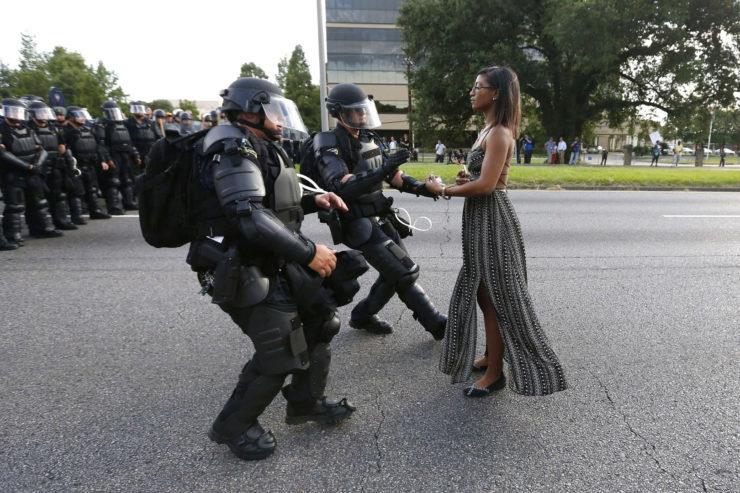
Another intervention into this problematic lack of diversity has been initiated by Brent Lewis of ESPN’s The Undefeated. He recently began accumulating names of editorial photographers of color for a list to circulate among photo editors. Lewis says he started the project after he realized how few black photographers were hired for editorial work. The idea for a database of minority photographers was born. Similar to the APJD, Lewis and his collaborators’ list will feature American and Canadian photographers of color, offering photo editors a resource to find more than the “usual suspects.”
Through the professional ethics and practices of objectivity in journalism, we have consistently found ways to humanize most members of American society, from convicted rapists to murderous white supremacists. Depictions of black Americans rarely receive such treatment in news media, however, whether in images or the written word. We must commit to challenging all prevailing and easy narratives, affirming a desire to do both good, accurate, ethical storytelling and to take into consideration a multifaceted perspective with which we may be entirely unfamiliar. This originates with the journalists on the ground and continues with the editors making choices in the newsroom.
The dual powers that photojournalists and photo editors have as eyewitnesses and curators of knowledge cannot be overstated. We shape the world in our own image: our individual understandings of truth and reality, our personal experiences and backgrounds do play into the scenes we choose to capture, how we frame them and whether we find them deserving of public dissemination. There is so much more to the photographs we take, select, and publish than aesthetics and the reality of any individual moment. Rather, each frame captured is a single millisecond in a sociocultural, historical reality that predates subject, photographer, and viewer. As Crowder says, “The lens through which you tell the story matters as much as the story itself.”
An earlier version of this article incorrectly described World Press Photo’s Joop Swart master class.
